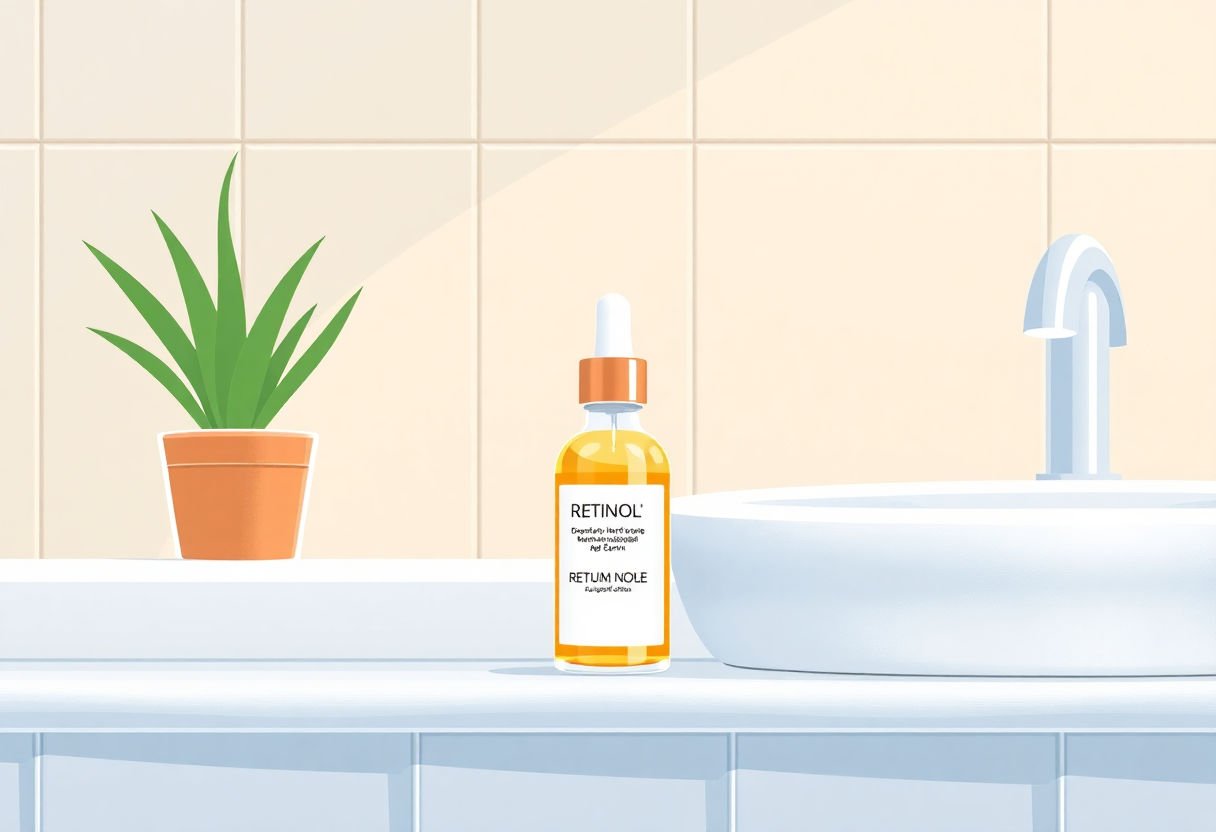Retinol has taken the skincare world by storm. It’s a game-changer for many looking for clearer, healthier skin. But what makes retinol so popular? We’ll look at how retinol fits into our beauty routines. Powerful anti-aging benefits are one reason people love it. From reducing wrinkles to improving skin tone, retinol does a lot. Learn the steps to add it to your routine and avoid side effects. Understand the need for sunscreen with retinol use. Explore alternatives for sensitive skin and find the right product for your needs. Dive in and unlock the secrets of retinol.
Key Takeaways
- Retinol, a form of Vitamin A, plays a key role in skincare for reducing signs of aging.
- It helps to smooth skin texture, reduce wrinkles, and improve overall tone.
- Start with lower concentrations of retinol to avoid skin irritation and gradually increase usage.
- Always use sunscreen during the day to protect skin when using retinol products.
- For those with sensitive skin, other gentle alternatives exist if retinol proves too harsh.
What is Retinol?

Retinol is a star player in skincare. Derived from Vitamin A, retinol does wonders for the skin. It is like a carpenter for your face. It helps build a smoother surface by working hard on the deeper layers of the skin.
Vitamin A comes from foods like carrots and sweet potatoes. When you put retinol on your skin, it turns into something magical. It changes into retinoic acid. This is what works with your skin cells to improve them.
Retinol speaks to the skin in a unique way. It encourages cells to behave and function better. The result? Healthy and fresh-looking skin.
How does retinol look? Imagine a structure with tiny building blocks. These tiny units are ready to repair and renew the skin. Retinol is a bit like that, forming bonds with skin molecules and changing from within.
In skincare products, retinol comes in different strengths. You may see it listed as retinol, retinaldehyde, or others on labels. Each form has its own level of strength but with the same goal: better skin.
To sum up, retinol, with its Vitamin A power, is not just a trend. It’s a key player in achieving clear and youthful skin. Whether a beginner or a skincare pro, understanding what retinol is can help make smart choices for skin health.
Benefits of Retinol in Skincare
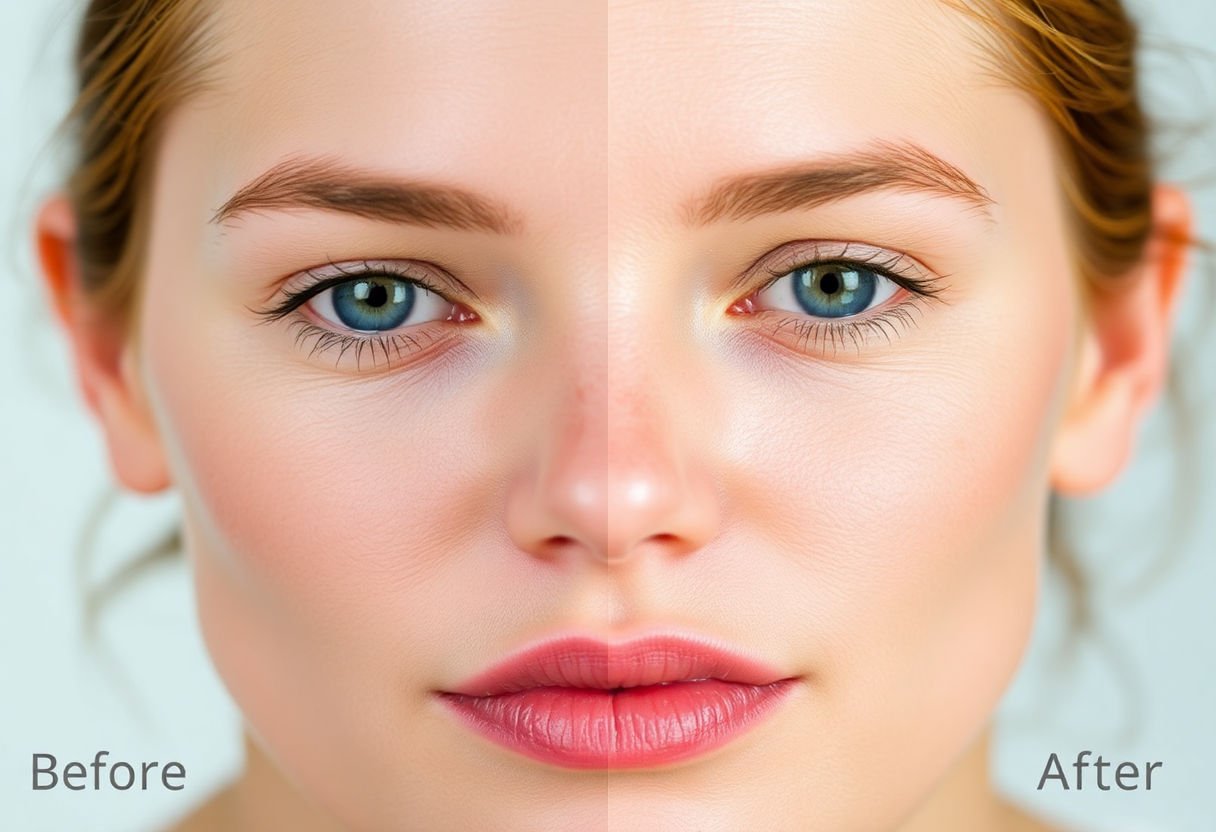
Retinol offers many benefits for skin care. It stands out for its power to reduce wrinkles. Think of it like an eraser for fine lines. With regular use, skin becomes smoother. The best part? It can make skin look younger.
Retinol functions well in evening out skin tone too. Dark spots and blemishes can fade over time. Skin appears brighter and more balanced. It’s like hitting refresh on a dull complexion.
Collagen production sees a boost with retinol. Collagen is like skin’s support system. As we age, collagen levels drop. Retinol steps in to help. With more collagen, skin stays firm and elastic. This keeps sagging at bay.
Some highlights of retinol include:
- Wrinkle reduction: Smooths fine lines and wrinkles.
- Even skin tone: Fades dark spots and uneven areas.
- Collagen boost: Increases firmness and elasticity.
Users often see changes in weeks. But, retinol isn’t for everyone. Some might need to use it less often. Start slow to avoid dryness. A pea-sized amount is usually enough for the face. Listen to what your skin says. Adjust use as needed.
Remember: patience pays off. With steady application, retinol helps achieve clear, youthful skin.
How Retinol Works
Retinol works like a magic ingredient for the skin. It goes under the skin’s surface, where the real action happens. Think of it as a tiny plumber for your skin. It repairs and unclogs everything.
When you apply retinol, it speeds up the skin’s renewal process. Imagine peeling an onion. The top layers fall away, revealing fresh skin below. This quick turnover helps fade dark spots and smooth out the skin.
Collagen plays a big role, too. Retinol signals the skin to produce more collagen. Collagen keeps skin firm and youthful. Picture a tight rubber band. As we age, that rubber band loosens. Retinol helps tighten it back up, reducing wrinkles.
- Stimulates cell turnover
- Boosts collagen production
Retinol also helps with acne. It prevents dead skin from blocking pores. Less blockage means fewer breakouts. Pretty cool, right?
One key point, you must use retinol carefully. Start slow with it. Use it at night. This helps the skin adjust and not get irritated.
In simple words, retinol is a bit like a personal trainer for your skin. It pushes cells to behave better. It smooths and firms everything up. With continued use, skin can look clearer, smoother, and more youthful.
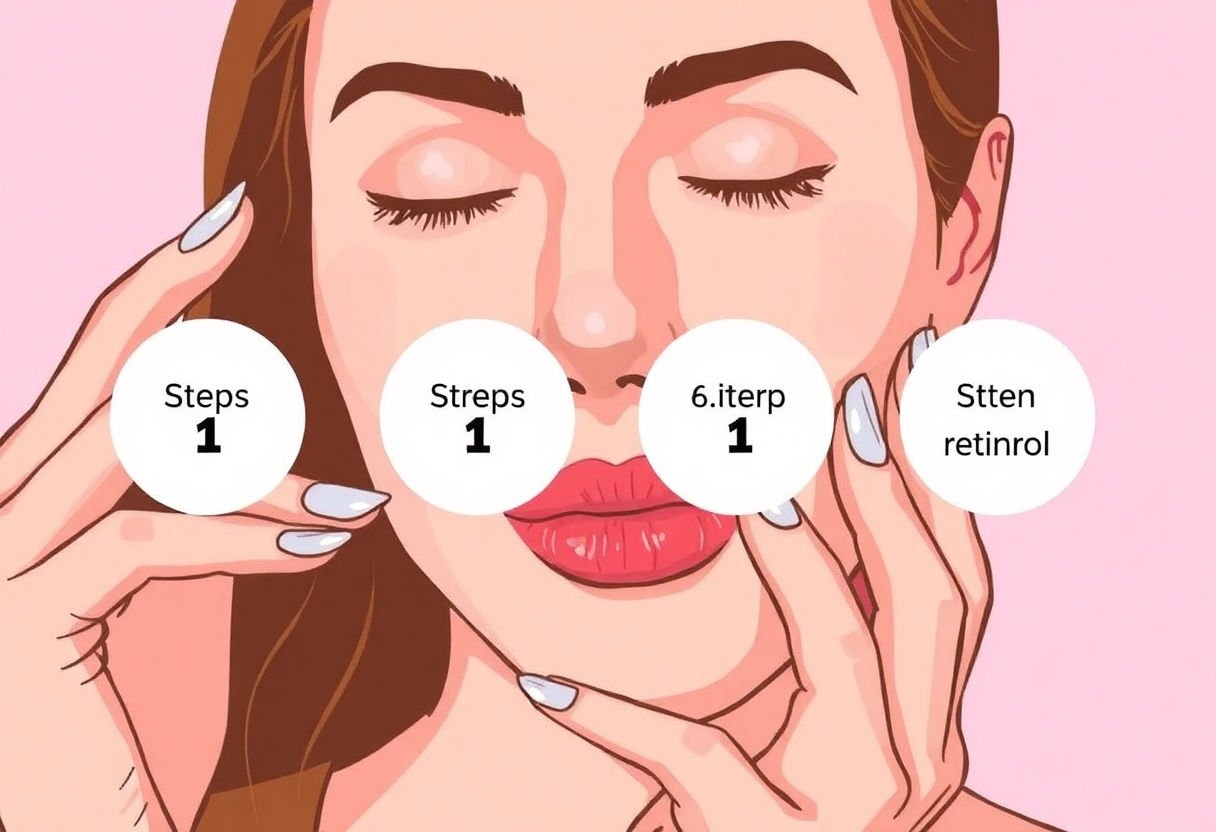
Starting retinol in your skincare routine can be exciting. Retinol helps your skin look youthful. But you need to introduce it carefully. Here are steps to get started:
Start Slow
New to retinol? Begin with a pea-sized amount. Apply it just twice a week. This helps your skin get used to it. Slowly add more days each week if you have no irritation.
Nighttime is Best
Use retinol in the evening. Sunlight can make retinol less effective and increase skin irritation. Night use helps it work better.
Layer Wisely
Apply retinol on clean, dry skin. Wait a few minutes for it to absorb. Follow with a gentle moisturizer. A moisturizer helps keep skin soft and calm.
Listen to Your Skin
Watch for redness. Scaling or peeling may occur. If this happens, cut back on use. Let your skin recover. Try using it less often or just use a moisturizer for a while.
Patience is Key
You might want to see results fast. But retinol takes time. Expect to see improvement in a few weeks. Your skin will thank you for patience.
Remember, less is more when starting with retinol. Consistency and care will help you enjoy its many benefits. Always use sunscreen during the day to protect your skin. Retinol can increase sensitivity to the sun.
Possible Side Effects and Precautions
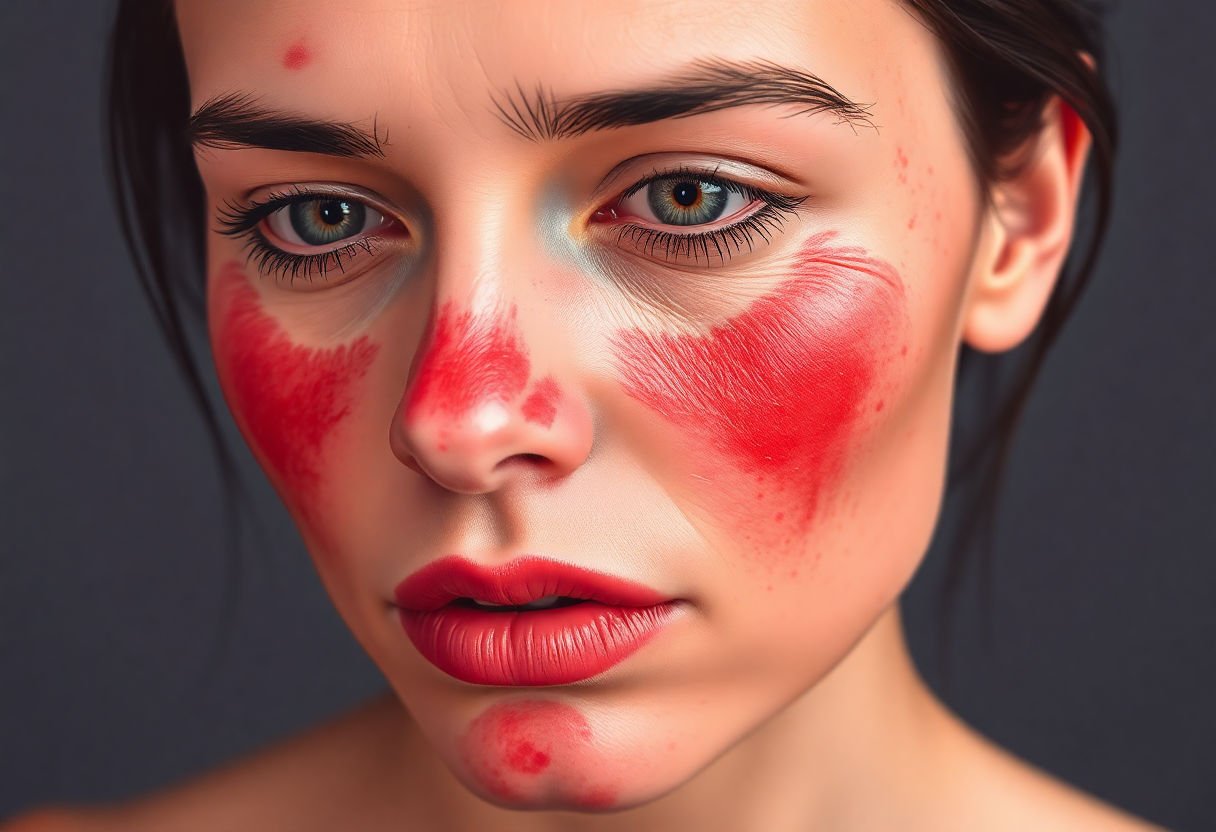
When using retinol, some people might see side effects. Common reactions include dryness, redness, and irritation. Think of your skin like a garden. Retinol helps in removing the old, but it can also dry out the fresh growth.
Dryness is one of the most typical side effects. Your skin might feel tight or look flaky. To help with this, use a gentle moisturizer.
Redness and irritation can happen too. Some people might notice their skin looking pinker or feeling itchy. This might remind you of a mild sunburn. To reduce this, start with a lower strength retinol and use it every few days until your skin gets used to it.
Precautions must be taken when using retinol:
- Start Slow: Begin with a small amount. See how your skin reacts before using more.
- Patch Test: Apply a bit on your forearm first. Check for a reaction after 24 hours.
- Avoid Mixing: Be careful not to mix with other strong products, like acids. This can irritate the skin even more.
- Stay Hydrated: Drink plenty of water and keep your skin moisturized.
If these side effects persist, consider speaking with a dermatologist. They can provide guidance on how to proceed. Always protect your skin, and adjust your routine if needed.
Retinol and Sun Sensitivity
Retinol can transform skin texture. But it can also make skin more sensitive, especially to the sun. This sensitivity happens because retinol speeds up how skin cells renew. New skin cells come to the surface faster. These cells are more delicate. They don’t have their full protection yet.
Think of retinol as an enthusiastic coach, getting your skin ready for the game. Yet, new players (new skin cells) need extra protection. When stepping outside, sun rays can hit these new cells hard. This can cause sunburn or dark spots.
Wearing sunscreen becomes vital. It shields the tender skin and prevents damage. Every day, even on cloudy days, apply sunscreen with at least SPF 30. It acts like an umbrella. But one attached to your skin.
Consider these sunscreen tips:
- Apply a generous amount on face, neck, and hands.
- Reapply every two hours if outside.
- Choose a broad-spectrum sunscreen. It blocks both UVA and UVB rays.
Retinol can give beautiful skin. Yet, pairing it with sunscreen ensures you get the glow without harm. Do not skip this step. With the right care, retinol can shine in your skincare routine, leading to clearer, younger-looking skin.
Alternatives to Retinol
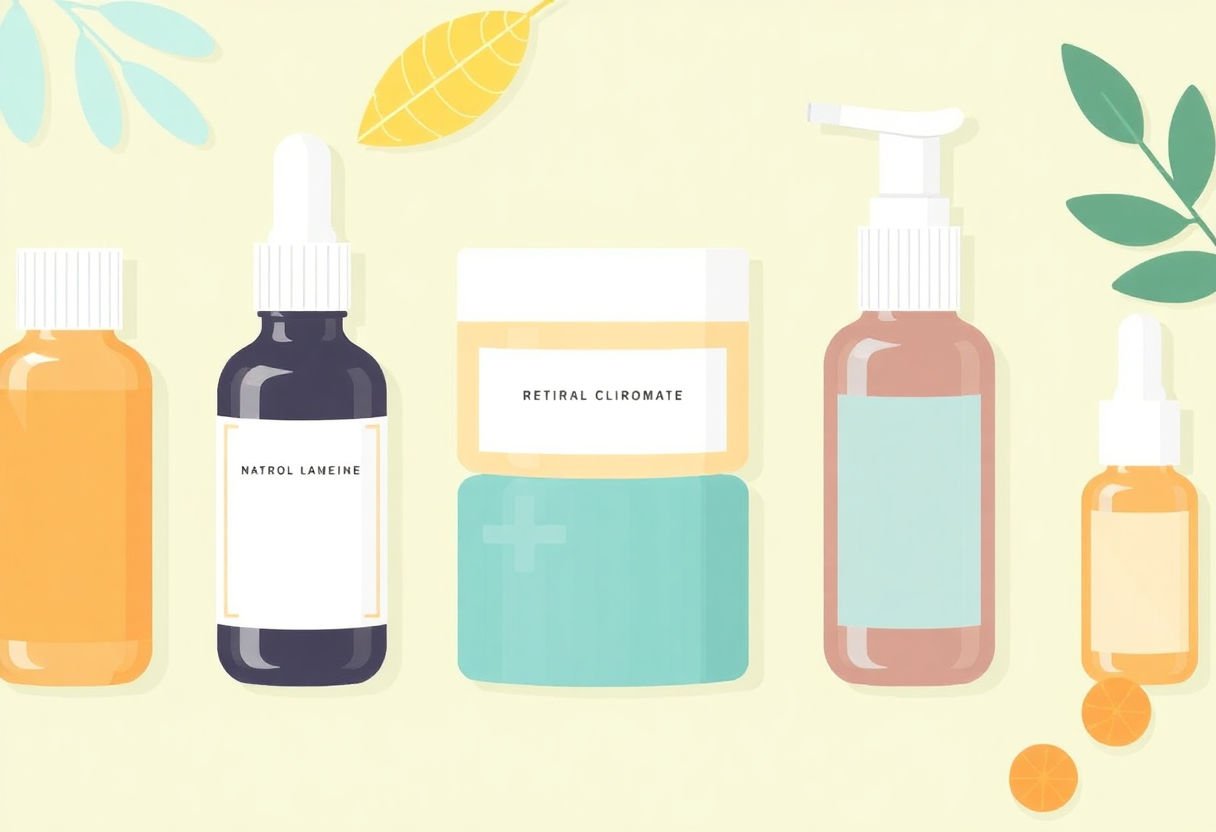
For those who cannot use retinol or wish to avoid its side effects, there are other options. These can give your skin a healthy glow without causing irritation. Let’s explore some of these alternatives.
Bakuchiol
Bakuchiol offers benefits similar to retinol. This plant extract is gentle on the skin. It reduces fine lines and improves skin tone. People with sensitive skin prefer it. It does not cause dryness or redness.
Niacinamide
Niacinamide, a form of Vitamin B3, works well in skincare. It helps reduce redness and blotchiness. It also tightens pores and improves skin texture. You will notice a brighter and more even skin tone.
Vitamin C
Known for brightening, Vitamin C boosts collagen. It helps fade dark spots and protects against sun damage. Your skin will look radiant and youthful with regular use.
Hyaluronic Acid
Hyaluronic Acid is hydrating. It holds moisture in the skin, reducing the appearance of fine lines. Your skin feels plump and fresh when you use it. It suits all skin types, even those prone to dryness.
Peptides
Peptides are small proteins that assist in skin repair. They increase collagen and elastin production. Skin becomes firmer and more resilient with consistent use.
Green Tea Extract
Rich in antioxidants, Green Tea Extract calms and soothes the skin. It reduces inflammation and prevents signs of aging. Use it for a clear and even complexion.
Choose the one that suits your skin needs the best. These options offer a gentle yet effective approach to skincare.
Selecting the Right Retinol Product
When choosing the right retinol product, you need to think about something that seems very simple, yet is key. Your skin type. Different skin types need different care. For example, oily skin may handle stronger retinol better, while dry skin might need a gentler formula.
Start with a low concentration if you have sensitive skin. Look for products labeled as 0.25% or 0.5% retinol. Like learning to swim in the shallow end, this allows your skin to get used to it. If your skin can manage it, slowly work your way up to a higher concentration like 1%.
Another important factor is the texture of the product. Creams are thicker and often good for dry skin. Serums are lighter, absorbing quickly. They suit oily skin well.
It may help to think of buying paint. Each color and finish gives a different look and feel. Retinol products are the same way, offering different results based on their characteristics. You should also check the additional ingredients in the product. Many retinol products include soothing ingredients such as niacinamide and hyaluronic acid, which help reduce redness.
Reading reviews or asking for a sample can also be helpful. Remember, what works for one person might not work for another. So, take your time to find the best match for your skin. Your comfort and needs matter most.
Conclusion
Understanding retinol’s role in skincare can lead to healthier, more youthful skin. This powerful ingredient reduces wrinkles and evens skin tone. It’s important to introduce retinol gradually into your routine. This helps minimize side effects. Always pair it with sunscreen for protection. Retinol might not be for everyone. Those with sensitivity should consider alternatives. Each skin type deserves special care. Consult a dermatologist for advice tailored just for you. Embrace this journey toward better skin with informed decisions. Get ready for a glow that reflects good care and understanding.
Frequently Asked Questions
How often should I use retinol?
Start with using retinol once or twice a week. Gradually increase as your skin adjusts. Listen to your skin’s needs to avoid irritation.
At what age should I start using retinol?
While there is no specific age, many begin in their late 20s or early 30s. This timing helps prevent early signs of aging.
Can I use retinol with other skincare products?
Yes, you can! Just be cautious. Avoid using it with other strong ingredients like exfoliating acids. Pair with moisturizer to reduce dryness.
Will retinol make my skin sensitive to the sun?
Yes, retinol increases sun sensitivity. Always wear sunscreen during the day to protect your skin.
Is retinol safe for sensitive skin?
Some people with sensitive skin may find retinol harsh. Consider milder forms or consult a dermatologist for other options.
